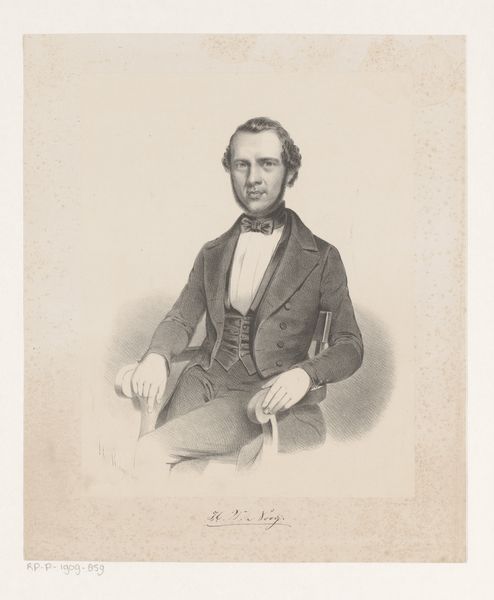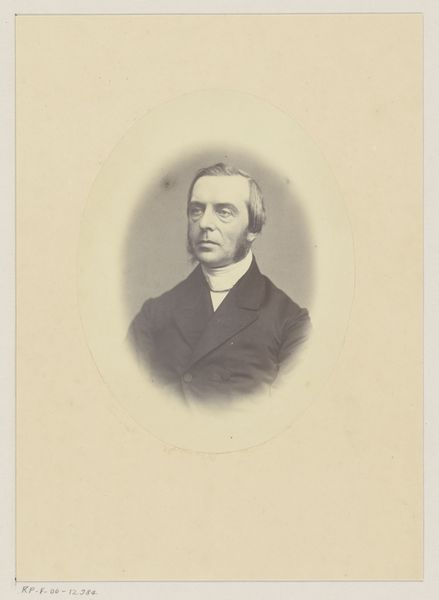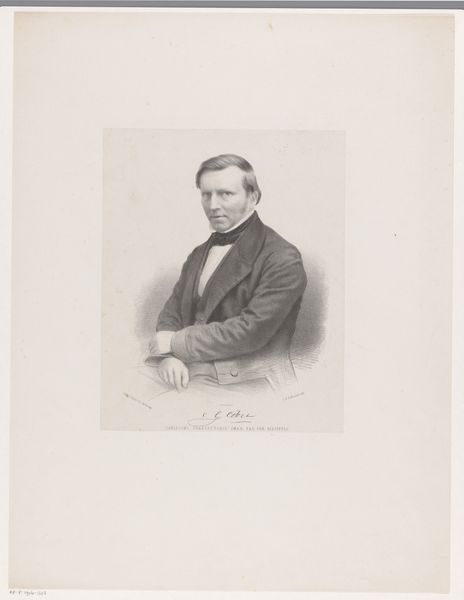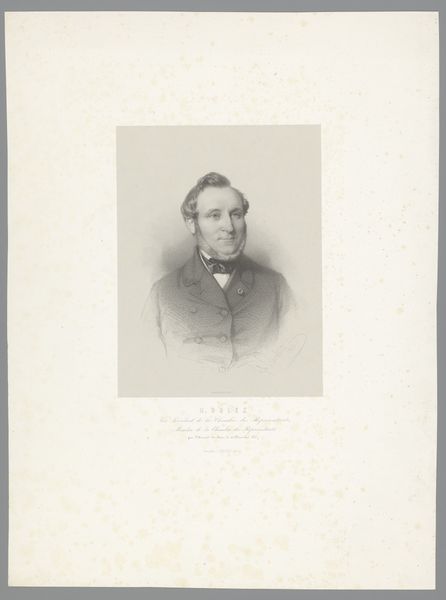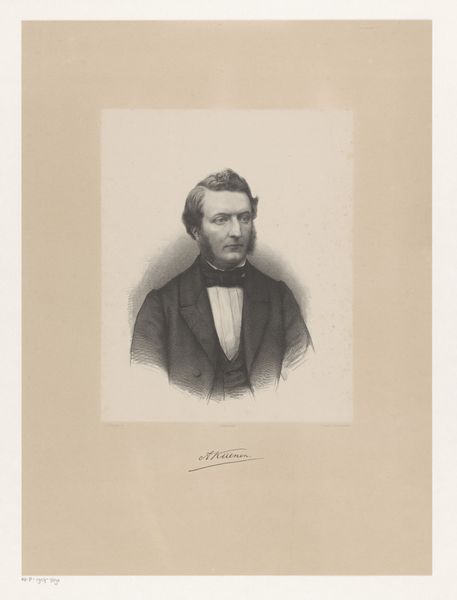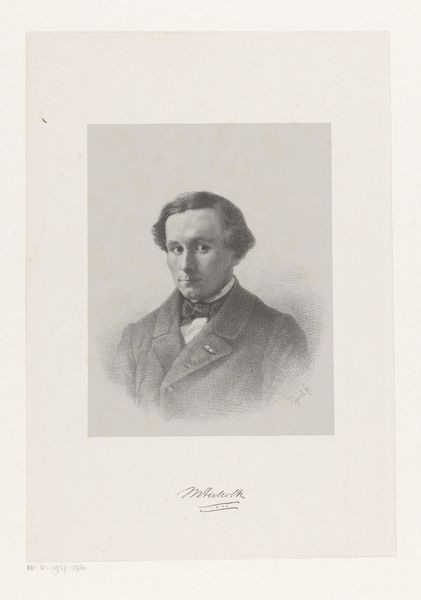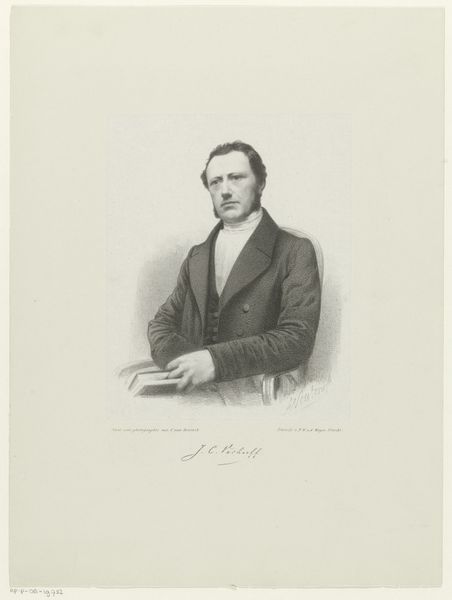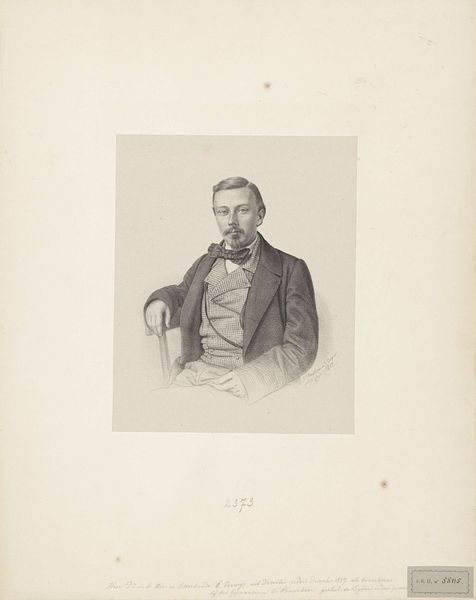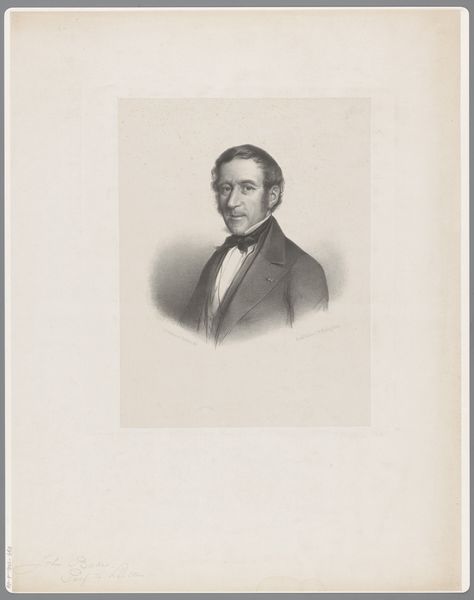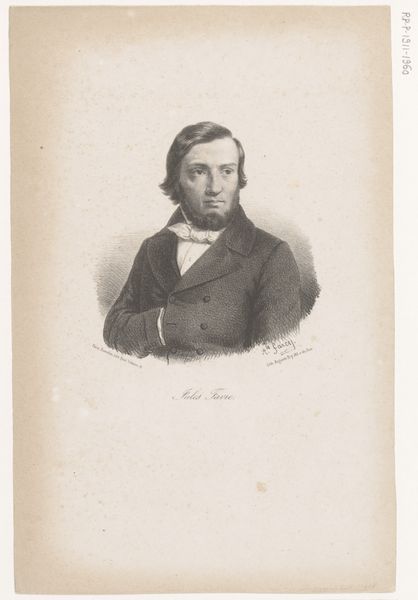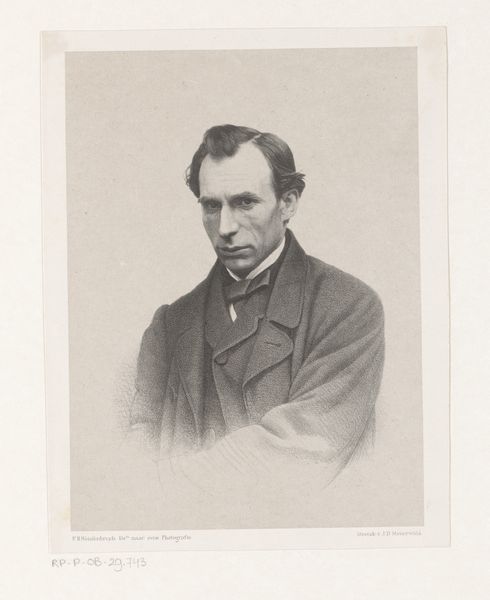
print, photography
#
portrait
# print
#
caricature
#
photography
#
portrait drawing
#
realism
Dimensions: height 464 mm, width 379 mm
Copyright: Rijks Museum: Open Domain
Curator: Here we have Adrianus Termorshuizen's "Portret van Philippus Samuel van Ronkel," created sometime between 1876 and 1883. It’s a compelling piece, a print rendered from photography. Editor: My first impression is a feeling of restrained melancholy. The soft grayscale palette combined with the subject’s somber gaze evokes a sense of quiet contemplation. Curator: Absolutely. Termorshuizen's expertise lies in the manipulation of light and shadow within the printing process itself. Notice the gradations around the face—achieved through painstaking chemical and mechanical processes of reproduction. These methods involved significant skilled labor. Editor: And this labour also suggests something about the sitters, or perhaps I should say 'subject’ as they were framed through the popularisation of portraiture. I can't help but think about Van Ronkel, an orientalist scholar. The portrait feels deeply embedded in that moment of high colonialism. It offers insight into constructions of masculinity within academic circles. Curator: Fascinating point. This form of photographic print became widely available. How did it shape notions of representation, authorship, and even class identity through portraiture as a popular form of documentation? Editor: It prompts considerations on the intersection of photographic technology and social stratification. To possess or commission one's own likeness in such a medium certainly signified status and belonging. How does art create belonging but, potentially, also, conversely otherness? Curator: Precisely! The choice of photographic print speaks volumes about accessibility and democratization, yet also reinforces existing social hierarchies. The printing of portraits allows wider circulation and greater legibility in visual culture. Editor: And the gaze! Does Van Ronkel’s image reflect a man complicit within a certain history? His place within a web of intellectual production that simultaneously enabled both orientalist knowledge and colonial power dynamics? The printing medium here serves to amplify that discourse by making that knowledge accessible through a portrait to an audience. Curator: An insightful perspective. The artist's method itself becomes part of the historical narrative we read. Editor: A crucial question about agency that shapes every photograph—from capture to dissemination. Considering that dynamic invites introspection beyond conventional aesthetic enjoyment. Curator: Indeed, bringing the historical production process to the forefront offers new levels of significance to a familiar image. Editor: It enriches our understanding of photography's role during the formation of empire!
Comments
No comments
Be the first to comment and join the conversation on the ultimate creative platform.
